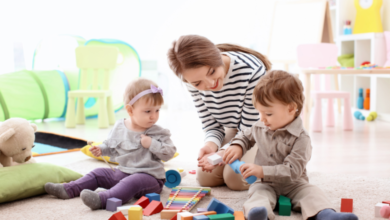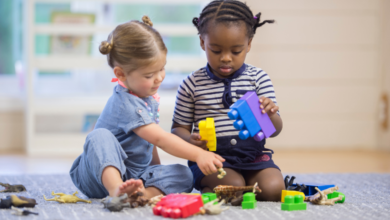Comprehensive Handbook for Handling Peer Pressure in Preschool

Brief Overview
Peer pressure isn’t reserved for adolescence; even preschoolers can experience social influences from their peers. At this stage, children are developing social skills, learning to navigate relationships, and beginning to understand social norms. While preschool peer pressure may not be as intense as it is later in life, it can still impact a child’s behavior and emotional well-being. This article provides a detailed guide on understanding and managing peer pressure in preschoolers, offering strategies for parents and caregivers to support their children in making positive choices and developing healthy social skills.
Introduction
Preschool is a critical time for social development. As children interact with their peers, they begin to understand social dynamics, form friendships, and experience various forms of peer influence. Peer pressure at this age often revolves around simple things, like choosing toys or participating in group activities, but it can still affect a child’s behavior and self-esteem. Addressing preschool peer pressure effectively involves recognizing the signs, understanding the underlying factors, and implementing strategies to help children make confident, positive choices. This article will explore these aspects in detail and offer practical advice for parents and caregivers.
1. Understanding Preschool Peer Pressure
- Nature of Peer Pressure: In preschool, peer pressure usually involves subtle social influences rather than overt demands. Children may feel pressured to conform to group behaviors, share toys, or join certain activities based on what their peers are doing. Unlike older children, preschoolers may not have fully developed the ability to resist peer influence or articulate their feelings.
- Developmental Stage: At this age, children are learning about social norms, cooperation, and group dynamics. Peer pressure often manifests as a desire to fit in, gain approval from friends, or avoid conflict. Understanding that this is a normal part of social development can help parents approach the situation with empathy and patience.
2. Recognizing the Signs of Peer Pressure
- Change in Behavior: A noticeable shift in behavior can indicate that a child is experiencing peer pressure. For example, a previously independent child may suddenly become more compliant or anxious about conforming to group expectations.
- Reluctance to Voice Opinions: If a child is hesitant to express their own preferences or opinions, it may be a sign that they are feeling pressured to go along with the group. They might avoid making choices or appear overly concerned about what others think.
- Emotional Distress: Peer pressure can sometimes lead to emotional distress, such as anxiety or frustration. If a child is frequently upset or worried about social situations, it may be worth exploring whether peer pressure is a contributing factor.
3. Strategies for Managing Preschool Peer Pressure
- Encourage Open Communication: Foster an environment where your child feels comfortable discussing their feelings and experiences. Encourage them to talk about their interactions with peers, and listen actively to their concerns without judgment. Open communication helps children feel supported and understood.
- Promote Self-Confidence: Building your child’s self-confidence can help them resist peer pressure. Praise their individuality and strengths, and provide opportunities for them to make decisions and solve problems independently. Confident children are more likely to assert their own preferences and resist negative influences.
- Teach Assertiveness Skills: Teaching preschoolers basic assertiveness skills can empower them to express their needs and boundaries clearly. Role-play different scenarios with your child, practicing how to say “no” or express their feelings in a respectful manner. This practice helps them build confidence in their ability to handle peer pressure.
- Model Positive Behavior: Children learn by observing adults, so model positive behavior and decision-making in your own life. Demonstrate how to handle social situations with integrity and assertiveness. By setting a positive example, you can help your child learn how to navigate peer pressure effectively.
- Encourage Group Play and Cooperative Activities: Promote group play and cooperative activities that emphasize teamwork and sharing. These activities help children learn how to interact positively with peers and build healthy relationships. By engaging in cooperative play, children can develop a sense of belonging and reduce the impact of peer pressure.
- Set Clear Expectations: Establish clear expectations for behavior and decision-making. Help your child understand the importance of making choices based on their values and preferences, rather than solely on peer influence. Reinforce that it’s okay to be different and that their individuality is something to be proud of.
4. Supporting Your Child in Social Situations
- Prepare for Social Interactions: Prepare your child for social interactions by discussing what they might encounter and how they can handle different situations. Role-playing scenarios and practicing responses can help them feel more confident and equipped to handle peer pressure.
- Encourage Positive Friendships: Help your child build positive friendships with peers who share similar values and interests. Positive peer relationships can provide a supportive network and reduce the likelihood of negative peer pressure. Encourage your child to engage in activities and join groups where they feel comfortable and accepted.
- Monitor Social Environments: Keep an eye on your child’s social environments and interactions. While it’s important to give them space to develop social skills, being aware of their peer interactions can help you identify any issues related to peer pressure. If you notice patterns of concern, address them calmly and constructively.
- Teach Problem-Solving Skills: Equip your child with problem-solving skills to help them navigate social situations effectively. Discuss strategies for handling peer pressure, such as finding alternative activities, seeking support from trusted adults, or politely declining invitations that make them uncomfortable.
5. Dealing with Negative Peer Influence
- Addressing Conflicts: If your child is involved in conflicts or negative peer influence, address the issue promptly and calmly. Discuss the situation with your child and work together to find solutions. Encourage them to express their feelings and explore ways to handle the situation constructively.
- Seek Professional Help if Needed: If peer pressure is significantly impacting your child’s emotional well-being or behavior, consider seeking support from a child psychologist or counselor. Professional guidance can provide additional strategies and support to help your child cope with peer pressure effectively.
- Encourage Resilience: Help your child develop resilience by focusing on their strengths and accomplishments. Encourage them to view challenges as opportunities for growth and learning. Resilient children are better equipped to handle peer pressure and maintain a positive sense of self.
6. Fostering a Positive Social Environment
- Create a Supportive Home Environment: Foster a positive and supportive home environment where your child feels valued and understood. A strong support system at home can help them develop the confidence and resilience needed to handle peer pressure effectively.
- Promote Healthy Social Skills: Teach and model healthy social skills, such as empathy, respect, and effective communication. These skills can help your child build strong relationships and navigate social interactions with greater ease.
- Encourage Involvement in Extracurricular Activities: Encourage your child to participate in extracurricular activities and hobbies that interest them. Involvement in activities outside of preschool can provide additional opportunities for social interaction and help them build a diverse network of friends.
Conclusion
Dealing with preschool peer pressure involves understanding the subtle ways in which social influences affect young children and implementing strategies to support their development. By fostering open communication, promoting self-confidence, and teaching assertiveness skills, parents can help their children navigate peer pressure with resilience and confidence. Supporting positive social interactions, preparing children for social situations, and addressing negative peer influence are essential for ensuring their emotional well-being. With patience, encouragement, and proactive strategies, parents can guide their preschoolers through this important phase of social development and help them build healthy, positive relationships.




